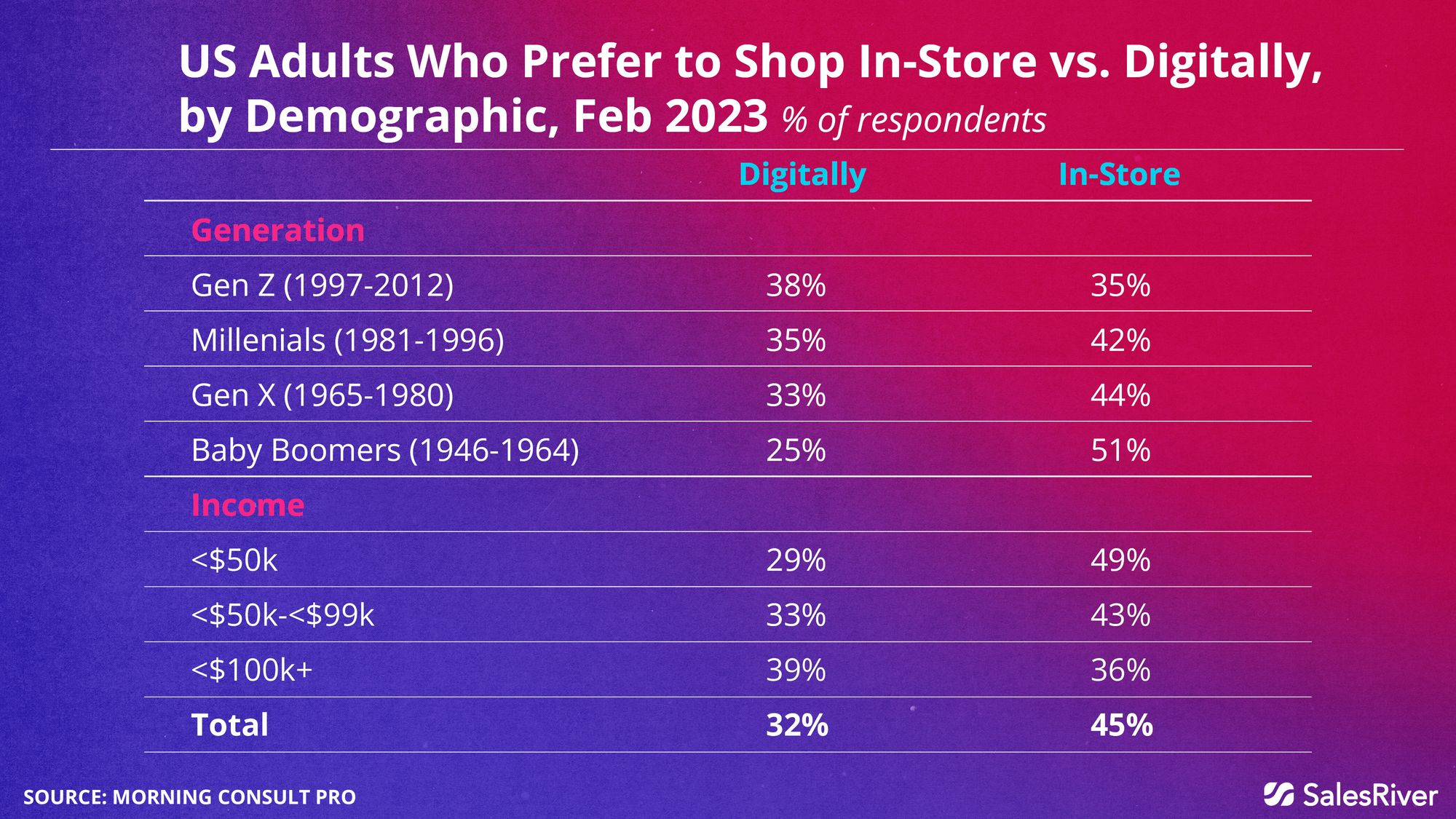Blog Posts
Jun 9, 2023
US Adult Preferences Shopping In-Store vs. Digitally by Demographic
SalesRiver’s Take:
The preference for in-store or online shopping is influenced by both age and income. As the generations become younger, there is a gradual shift towards digital shopping. This trend is evident from Baby Boomers through Gen Z, indicating that younger adults may be demonstrating higher levels of comfort with or prefer the convenience of shopping digitally.
On the other hand, income brackets also play a role in the adoption of online shopping. As income levels increase, there is a corresponding increase in the inclination towards digital shopping. This suggests that higher-income individuals may prioritize convenience in their transactional behaviors over other factors

The influence of income on shopping preferences could be attributed to the varying levels of convenience associated with different income levels. Higher-income consumers may find it more convenient to perform transactions digitally due to their higher purchasing power and access to technology. In contrast, lower-income consumers may approach their purchases with more caution and consideration, possibly due to budget constraints or budgetary sensitivities. This could explain why they might be more inclined to engage in in-person selling relationships, as it allows them to have a more personal and tangible experience before making a purchase.
Younger, higher-income individuals may be more comfortable with distance selling, where transactions are conducted online or remotely. They may have a higher likelihood of closing sales through digital means using digital communications channels.
On the other hand, older, lower-income individuals may prefer in-person selling relationships, as it provides them with a greater sense of trust and confidence in their purchases and therefore may suggest more personal communication pathways such as phone calls or in-person conversations.
Given the strong correlations between age and income in relation to shopping preferences, it is essential for salespeople to consider these factors when engaging with consumers. Understanding these correlations can guide salespeople in tailoring their approach to different consumer demographics to maximize their effectiveness in closing sales.
Source: Insider Intelligence | eMarketer
